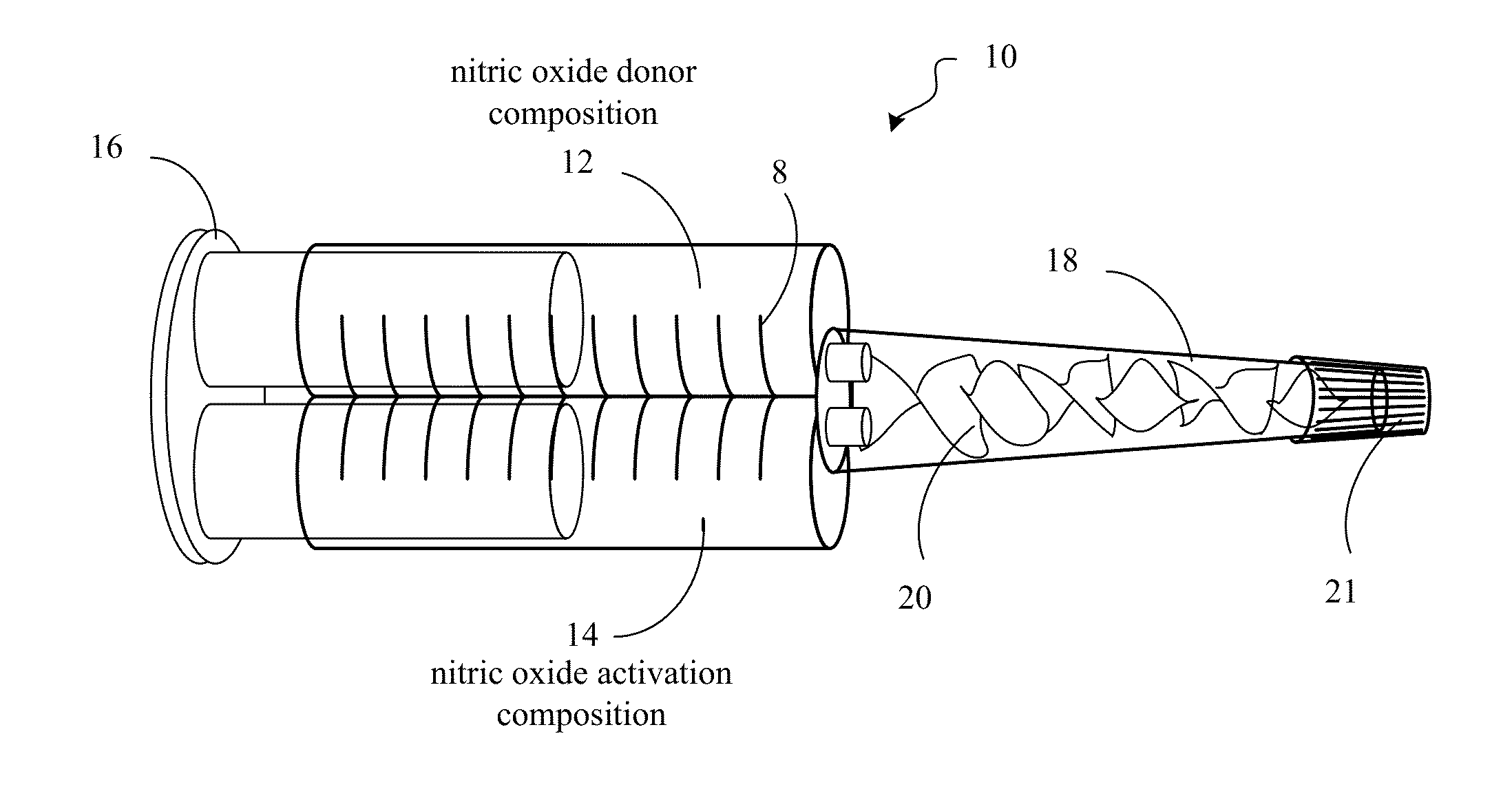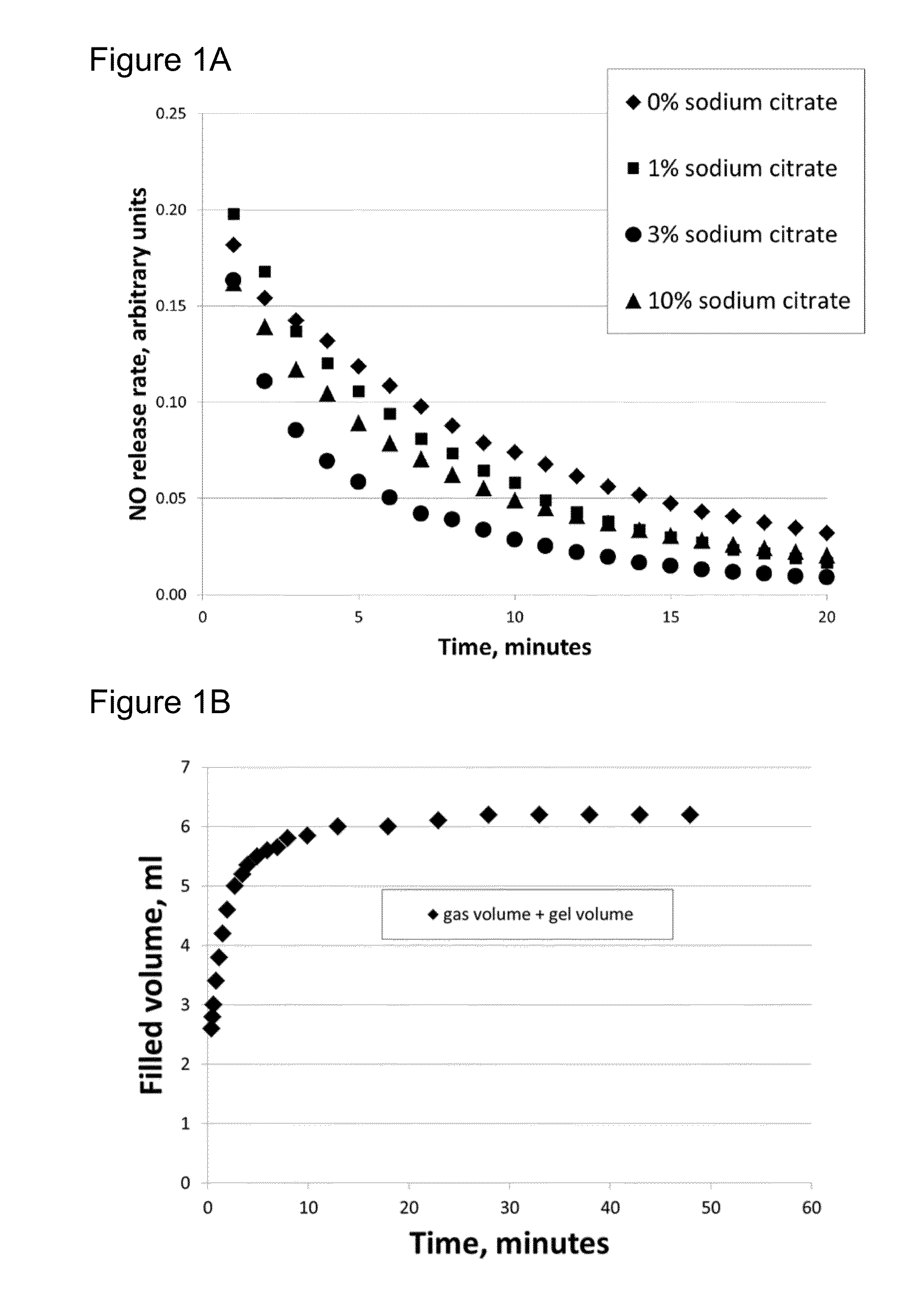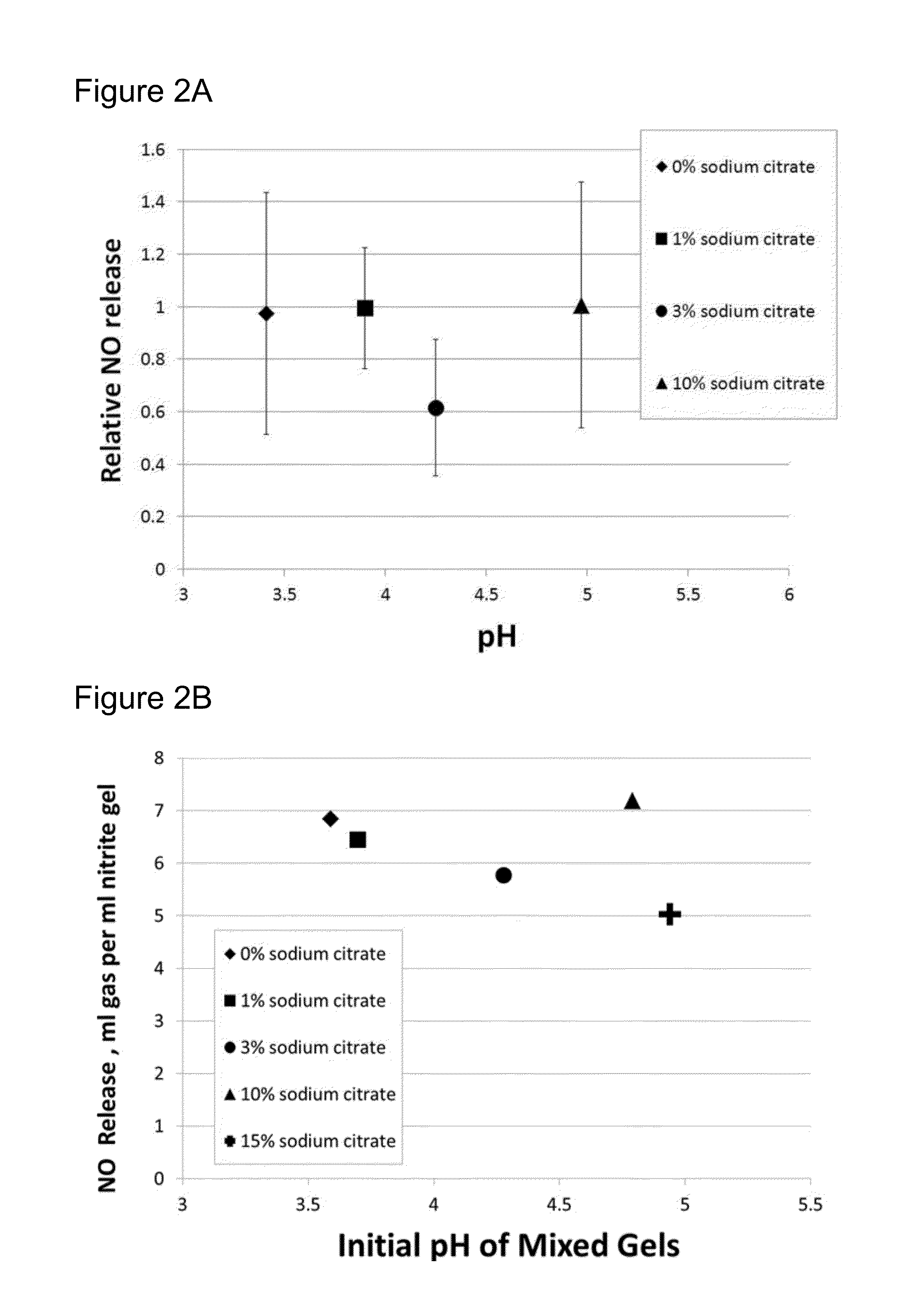Compositions and methods for topical nitric oxide generation
a nitric oxide and composition technology, applied in the direction of liquid-gas reaction type, gas-gas reaction process, metabolism disorder, etc., can solve the problems of reducing the oxygen supply of tissue oxygen, causing tissue damage, and causing undesirable systemic side effects, etc., to achieve the effect of sufficient viscosity
- Summary
- Abstract
- Description
- Claims
- Application Information
AI Technical Summary
Benefits of technology
Problems solved by technology
Method used
Image
Examples
example 1
Preparation of Acidified Nitrite Gel for Topical Release of Nitric oxide
[0068]The gels containing nitrite and acid are mixed individually and maintained separately until use. To prepare the nitrite gel, 85 ml deionized water was heated to 80° C. Two grams (2 g) of sodium nitrite was added, stirring until completely dissolved. Next 2.88 g of hydroxyethylcellulose (HEC) having an average molecular weight of 750,000 was added. The mixture was stirred until the HEC was completely gelled and then allowed to cool below 45° C. Deionized water was added to make up to a total product weight of 100 g, and stirred to ensure good mixing.
[0069]To prepare the acid gel, 70 ml deionized water was heated to 80° C. To this was added 5.6 g citric acid, 5.2 g of ascorbic acid (vitamin C) and, optionally, a measured amount of sodium citrate, with stirring until all components were dissolved. In certain embodiments, the ascorbic acid derivative 3-O-ethyl ascorbic acid was used. Then, 2.88 g of hydroxyeth...
example 2
Preparation pH-Controlled Gel Mixtures
[0072]Following the above mixing procedure of Example 1, four citric acid-containing gels were prepared with different amounts of sodium citrate. The weight percentages of sodium citrate and the molarity of the primary components are shown in Table 1 for these four gels. Each gel had molarities of 0.30M citric acid, 0.28M ascorbic acid and 4.4×10−5M hydroxyethylcellulose of molecular weight 750,000. The citric-acid based gels including various amounts of sodium citrate were admixed with an equal volume of a nitrite containing gel having molarities of 0.32M sodium nitrite and 4.4×10−5M hydroxyethylcellulose of molecular weight 750,000 to produce NO. The initial pH values of the mixtures of the acid and nitrite gels are also shown in Table 1. Increasing the amount of sodium citrate increases the pH of the acid-containing gels themselves and as well as the initial pH of mixtures of the acid-containing gels and the nitrite-containing gels.
TABLE 1Mal...
example 2.1
Preparation pH-Controlled Gel Mixtures
[0074]In another example, following the mixing procedure of Example 1, five acid gels were prepared with different amounts of sodium citrate. The weight percentages of sodium citrate and the molarity of the active components are shown in Table 2 for these gels. Table 2 also shows the pH of each acid gel, as measured after its preparation. A nitrite gel was prepared following the mixing procedure of Example 1, which provides a nitrite gel having molarities of 0.29M sodium nitrite and 3.84×10−5M hydroxyethylcellulose of molecular weight 750,000. Approximately 1.5 ml of the first acid gel and an equal amount of nitrite gel were respectively loaded into opposite cylinders of a dual-cylinder, 2 ml mixing syringe fitted with a static mixer (Syringe 4B19 with a 4.6 mm×16 element static mixer, both from Plas-pak Industries, Norwich Conn., USA). Operating the mixing syringe causes the gels to mix as they flow through the static mixer. The contents of the...
PUM
| Property | Measurement | Unit |
|---|---|---|
| biocompatible | aaaaa | aaaaa |
| pH | aaaaa | aaaaa |
| concentrations | aaaaa | aaaaa |
Abstract
Description
Claims
Application Information
 Login to View More
Login to View More - R&D
- Intellectual Property
- Life Sciences
- Materials
- Tech Scout
- Unparalleled Data Quality
- Higher Quality Content
- 60% Fewer Hallucinations
Browse by: Latest US Patents, China's latest patents, Technical Efficacy Thesaurus, Application Domain, Technology Topic, Popular Technical Reports.
© 2025 PatSnap. All rights reserved.Legal|Privacy policy|Modern Slavery Act Transparency Statement|Sitemap|About US| Contact US: help@patsnap.com



